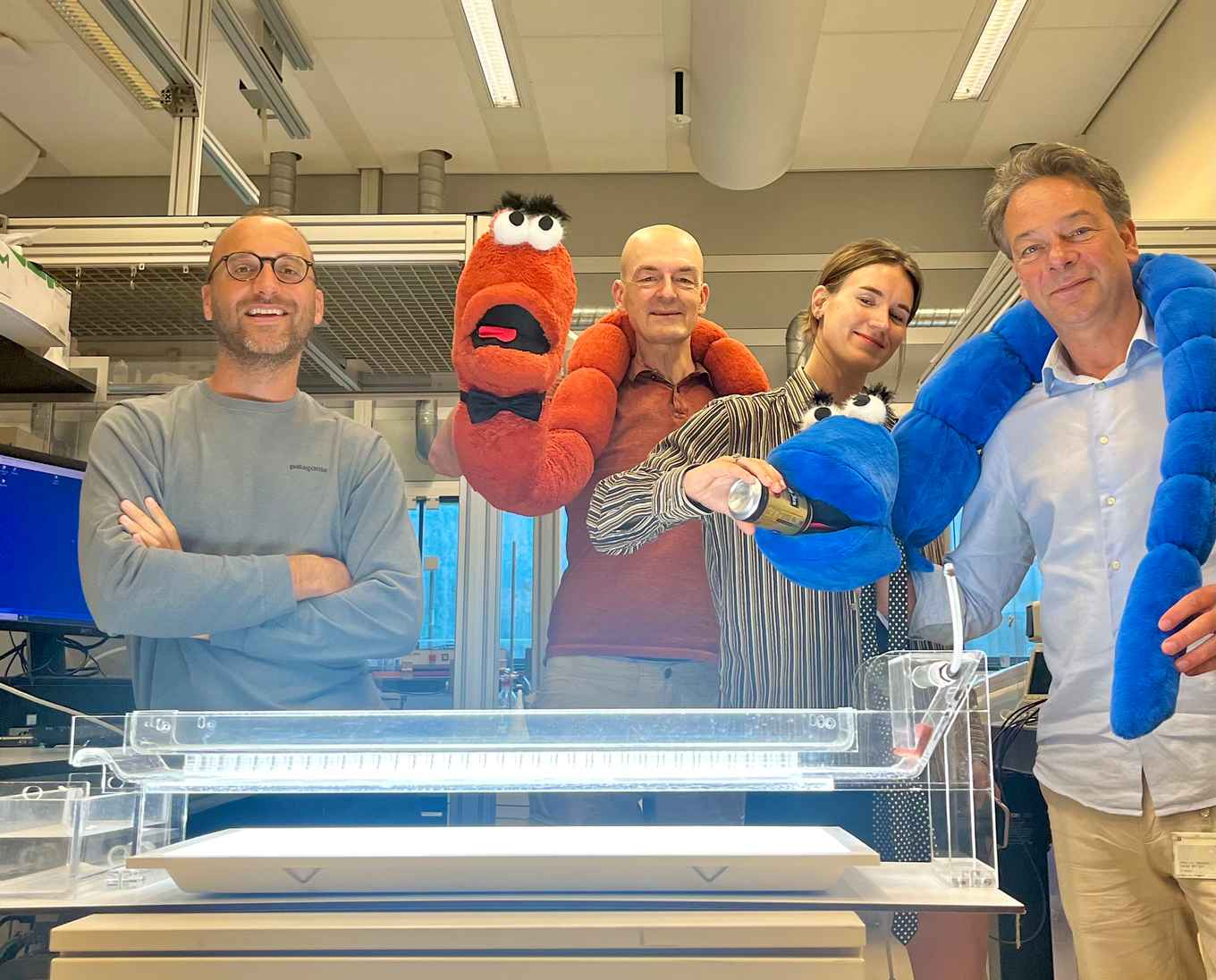Ig Nobel prize for drunk worms
13 September 2024

The Ig Nobels have been awarded annually since 1991 in celebration of unusual achievements in scientific research. Their aim is to ‘honour achievements that first make people laugh, and then make them think’. The prizes were handed out at a ceremony at the Massachusetts Institute of Technology last night. Besides this Ig Nobel prize, a second one also went to a team of UvA researchers for their research on the fairness of coin tosses.
Active worms
The team from the UvA-Institute of Physics and Van ’t Hoff Institute for Molecular Sciences collected the prize for their work with inebriated worms. They used the worms to model ‘active matter’ – essentially, particles that can move on their own. Active matter is booming business in biology, chemistry and physics, with scientists desperately searching for a theory that will help them understand how overall properties emerge from individual particle characteristics.
As team member Antoine Deblais puts it: ‘If you show a long, slender object that moves to a chemist, they will see it as a polymer whose conformation fluctuates because of thermal motion. A biologist will see a worm, or snake, that moves because it is looking for food. As a physicist, you wonder: what is the fundamental difference between those two perspectives?’
Drunk matter
The team came up with the idea of using actual worms as a means to study active matter. They devised an experimental setup where a maze helped differentiate worms with different activity levels as they slalomed through it. BSc student Tess Heeremans built the device, together with UvA’s Technology Center. Due to the Covid regulations that were in place at the time, the experiments were performed in Heeremans’ student housing.

The worms that were used in the experiment were bought in an aquarium store just down the street (where they are sold as fish food – an idea of team member Sander Woutersen, who had used them for his aquarium fish as a child), and were flushed through the maze with a water flow. By getting half of the worms drunk before the race, the team made sure the difference in their activity levels was large enough to obtain meaningful results. The somewhat surprising result was that drunk worms take longer to get out of the maze than sober ones. This is not as obvious as it may seem: since inactive worms “go with the flow”, the team initially expected the drunk worms to come out first. Thus, the inebriated worms helped the scientists sharpen their understanding of active matter.
Research that makes you laugh – then think
The results perfectly satisfy the Ig Nobel criteria: they first make you laugh, then make you think. The team is very happy to receive the prize for their research. ‘Some scientists dream of the Nobel prize. I have always wanted the Ig Nobel,’ says team member Daniel Bonn. Sander Woutersen adds: ‘It’s the most fun Friday-afternoon experiment we ever did.’
In the spirit of the Ig Nobel prizes, the research team made a playful video about their resuls. The worms that appear in the video and in the image above were created by Sander Woutersen’s sister Jacqueline. Watch the team’s interpretation (and that of two worms) below:
The Ig Nobel cermony was streamed live and can be watched back below. The part of the ceremony for the chemistry prize starts at the 1:33:42 timestamp.